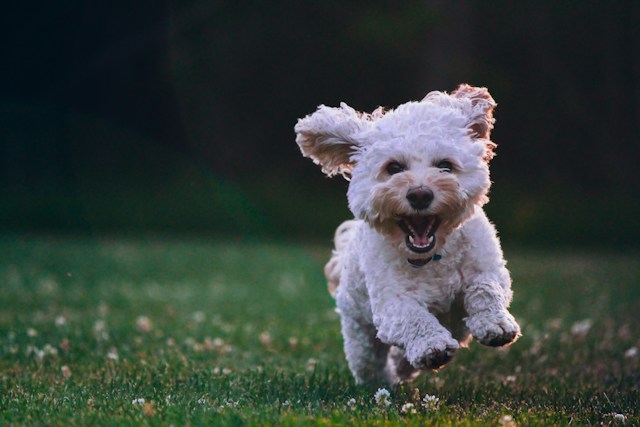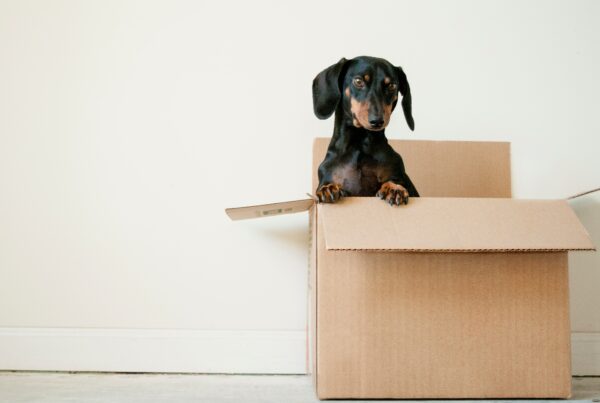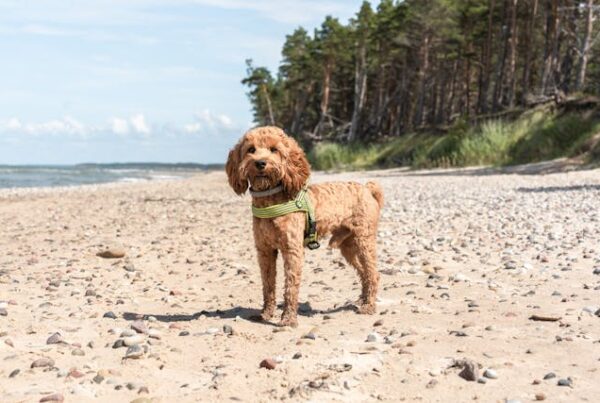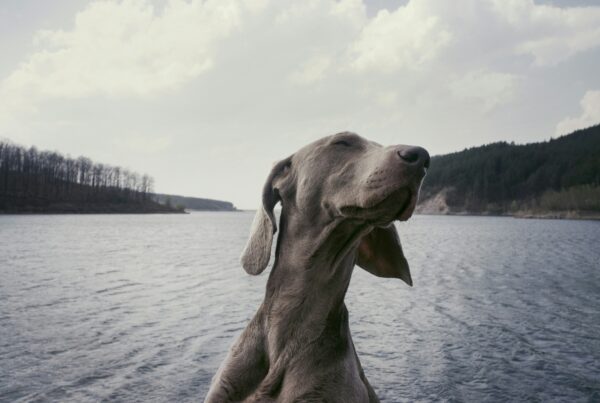Moving to a new place is a big change for you and your furry friend. When moving with your pet, it’s essential to make the transition as smooth as possible. Your dog’s comfort and happiness in their new territory should be a top priority. Saying goodbye to his favorite spots can be tough, but with the right approach, you can confidently help your dog settle into their new home. This guide will give practical tips for helping your dog explore and navigate their new territory. So, let’s get started on this exciting journey together.
Preparing for the Move
Before embarking on the journey to your new home, preparing yourself and your furry companion for a successful move is essential. This phase sets the foundation for your dog’s adjustment to their new territory.
Planning Ahead
Planning is the key to a smooth move with your dog. Start by making a checklist of all the tasks you need to accomplish before moving day. That includes finding a new pet-friendly home, researching local pet regulations, and checking your dog’s microchip and tags have your current contact information.
Minimizing Stress for Your Dog
Moving can be stressful for dogs, with all the hustle and bustle. To help your pup stay calm, designate a quiet and safe space in your home where they can retreat during packing. Verify they have their favorite toys and bedding to keep them comfortable.
Consistency is Key
Dogs thrive on routine, so try to keep their daily schedule as consistent as possible leading up to the move. That includes regular feeding times, walks, and play sessions. Maintaining familiar routines can provide a sense of stability for your dog during this transitional period.
Arrival at the New Home
After all the preparations, it’s finally time to arrive at your new home with your furry friend. That is a crucial moment in the moving process, and how you handle it can significantly impact your dog’s ability to adapt to their new territory.
Safely Transporting Your Dog
Relocating with Your Pup: Safety Tips
Embarking on a new journey to your new home with your pup requires prioritizing their safety at every step. Therefore, you could use some indispensable tips for relocating with your pup safely and guarantee a smooth and secure relocation. For instance, secure your dog in the vehicle using a sturdy harness or a comfortable crate. That is highly important for their safety during transit. In addition, plan frequent stops to cater to your dog’s bathroom and hydration needs, periodically checking they stay comfortable and stress-free.
Lastly, always remember to open a window for ventilation, particularly if you need to step out of the car. These simple yet effective measures will make the relocation a safer and more enjoyable experience for both of you.
Securing Your Dog in the New Environment
Once you’ve arrived, securing your dog in the new space is important. Keep your dog on a leash or inside a crate to prevent bolting out of excitement or fear. That is especially important if you’re moving into an apartment building or a neighborhood with unfamiliar surroundings.
Helping Your Dog Explore and Navigate Their New Territory: Gradual Introduction
Your dog might initially feel overwhelmed by the new territory. To help them acclimate, introduce them to one room or a smaller area of your new home. Allow your dog to explore gradually, and provide plenty of positive reinforcement with treats and praise.
Using Familiar Items
Place some of your dog’s favorite toys, bedding, and belongings in the new space to ease the transition. Familiar scents and objects can provide comfort and security, making your buddy feel more at home.
Outdoor Exploration
Now that you and your pup have settled into your new home, it’s time to embark on outdoor exploration adventures. These outings are helping your dog become familiar with their new surroundings and build confidence.
Starting with Short Walks
Begin your outdoor explorations with short walks around your neighborhood. Keep the initial outings brief and close to home to avoid overwhelming your dog. Gradually increase the length of your walks as your dog becomes more comfortable with the area.
Gradually Expanding Your Dog’s Territory
As your dog gains confidence, you can explore new routes and parks. It’s a gradual process, so take your time. Allow your pup to lead the way and sniff around; this is how they learn about their new territory. Be patient and let them set the pace.
Consider making weekend outings a regular tradition. That helps your dog adapt to their new environment and strengthens your bond. Exploring new trails, parks, or dog-friendly cafes together can be an exciting adventure for you and your furry companion.
The Importance of Patience and Positive Reinforcement
Patience is key during outdoor exploration. If your dog is hesitant or anxious, don’t push them. Offer praise and rewards for small achievements, like walking further or approaching a new dog-friendly park. Positive reinforcement goes a long way in building your dog’s confidence.
Building Confidence
Building your dog’s confidence in their new territory is fundamental to their well-being and happiness during a move. The process can sometimes be challenging, but with the right strategies and support, you can help your furry friend adapt comfortably to their new environment. Here are some practical ways to empower your furry friend:
- Gradual Independence: Begin by allowing your dog to explore familiar areas, such as the yard or a nearby park they’ve visited before. As they grow more comfortable, they slowly expand the areas they can explore independently.
- Positive Reinforcement: Whenever your dog takes the initiative to explore a new area or try something new, offer immediate praise and reward them with treats or affection. This positive feedback creates a sense of accomplishment and encourages them to continue exploring.
- Rewarding Confidence: Each time your dog displays confidence in their new surroundings, such as approaching a new neighbor or investigating a previously unfamiliar spot, offer tasty treats and enthusiastic praise. Over time, they’ll associate positive feelings with their new territory.
- Reinforcing Positive Associations: Use treats strategically to help your dog establish positive associations with new places during outdoor explorations. For instance, treat them when they calmly approach new surroundings or are curious about unfamiliar areas.
- Gradual Introduction: Introduce your dog to different aspects of their new environment. For instance, take them on short walks in the neighborhood to acquaint them with new sights, sounds, and smells, but keep the initial experiences mild.
- Desensitization: If your dog displays nervousness or fear towards specific sights or sounds, engage in desensitization. That involves gradually exposing them to the triggers while providing comfort and positive reinforcement. Over time, this can help your dog become more comfortable with what initially made them anxious.
Establishing Routine
Establishing a routine for your dog in their new territory is a key ingredient for their successful adjustment. Just like us, dogs find comfort in predictability. In this section, we’ll explore practical ways to establish a daily routine that brings stability and a sense of security to your furry companion as they adapt to their new surroundings.
Consistency is Key
Consistency is at the heart of any successful routine. Dogs thrive on knowing what to expect, so strive to keep their daily schedule as consistent as possible.
Set regular times for your dog’s meals and walks. If possible, stick to the same schedule you had in your previous location. Familiarity with these routine activities will provide comfort and a sense of normalcy.
Exercise and Mental Stimulation
Maintaining your dog’s physical and mental well-being is important in their new territory. Continue to engage in regular exercise and play sessions. Explore local parks and trails to guarantee your dog gets physical activity. Mental stimulation, such as puzzle toys or obedience training, can help them adapt.
Bedtime and Sleep Routine
Dogs appreciate a structured bedtime routine. Create a comfortable sleeping area and establish a pre-sleep ritual. That could include a short walk, a quiet playtime, or simply cuddling together. Consistency in your bedtime routine will help your dog feel secure.
Socializing Your Dog
Socializing is helping your dog explore and navigate their new territory, adapt, and feel comfortable in their surroundings. It’s an opportunity for your furry friend to make new friends, learn about the local community, and establish a positive presence in the neighborhood. Let’s explore the importance of socialization and how to navigate these interactions effectively.
- Greet and Meet: When you spot your neighbors, take a moment to introduce yourself and your pup. A friendly greeting can go a long way in establishing connections.
- Ask for Permission: Always ask for permission before allowing your dog to approach another person or their dog. Not everyone may be comfortable with dogs, and respecting their boundaries is important.
- On-Leash Encounters: When meeting other dogs while on walks, maintain control by keeping your dog on a leash. Allow them to exchange sniffs and brief interactions, always watching for any signs of discomfort or aggression.
- Dog Parks and Playdates: Seek local dog parks or arrange playdates with other dog owners. These settings provide a controlled environment for your dog to socialize and make new canine friends.
- De-escalate Tensions: If your dog and another dog seem to disagree, calmly and quickly separate them. Avoid escalating the situation by staying calm and composed.
- Seek Professional Help: Consult a professional dog trainer or behaviorist if your dog displays persistent behavioral issues or aggression. They can guide people in addressing these challenges effectively.
- Respect Local Regulations: Be aware of leash laws and pet etiquette regulations. Following these rules helps you have a positive socialization experience for your dog and the community.
Your Dog’s New Adventure
In the journey of helping your dog explore and navigate their new territory, remember that patience and understanding play a significant role. Planning, gradually introducing your dog to the new environment, building their confidence, establishing a daily routine, and promoting socialization allow a smoother transition. With these tips, your furry friend will soon find comfort, security, and belonging in their new home.




